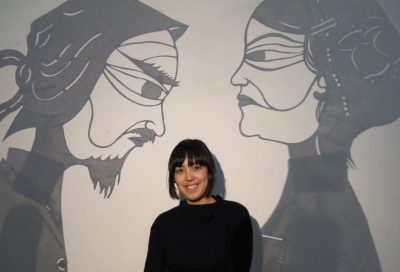October 17, 2019-February 9, 2020
Curator's Statement
I have spent the last ten years living with, thinking about, and working with traditional Chinese shadow puppetry and its puppeteers as they witness the shift of their form from vital community practice to preserved heritage. When I began my first apprenticeship in Huaxian, Shaanxi Province in 2008, my personal perspective on preservation and material performance was preoccupied with words like “authentic” and “real.” But over the years, as I worked closely with shadow puppeteers throughout nine provinces, their own questioning has led me to larger questions of why and how we work to continue a performance form and what is lost when there is no one left to carry on the practice.
This exhibition shies away from a historic presentation and instead uses artfully hung artifacts, ethnographic video, and interactive prompts to explore the central question that drives my research: can you preserve a shadow? The main concern of the many shadow puppeteers I have worked with has not been preservation, but the passage of the practice from one generation to the next; for without human animation and interaction the shadow is truly immaterial.
– Annie Katsura Rollins
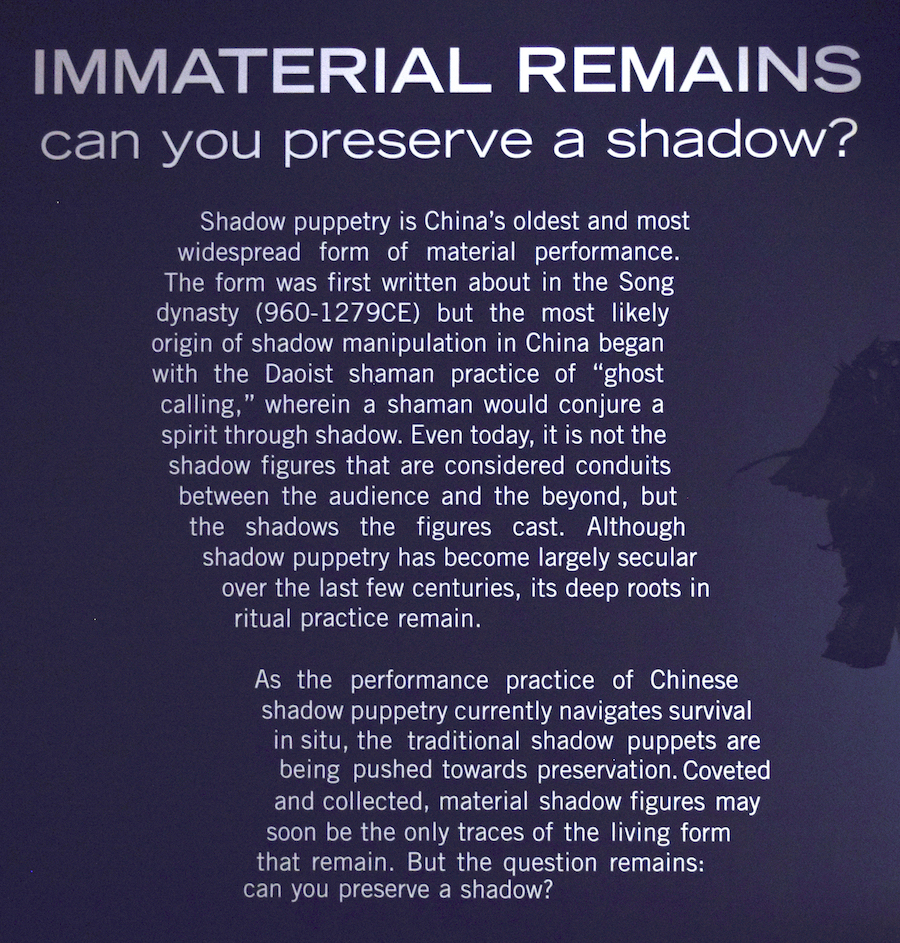
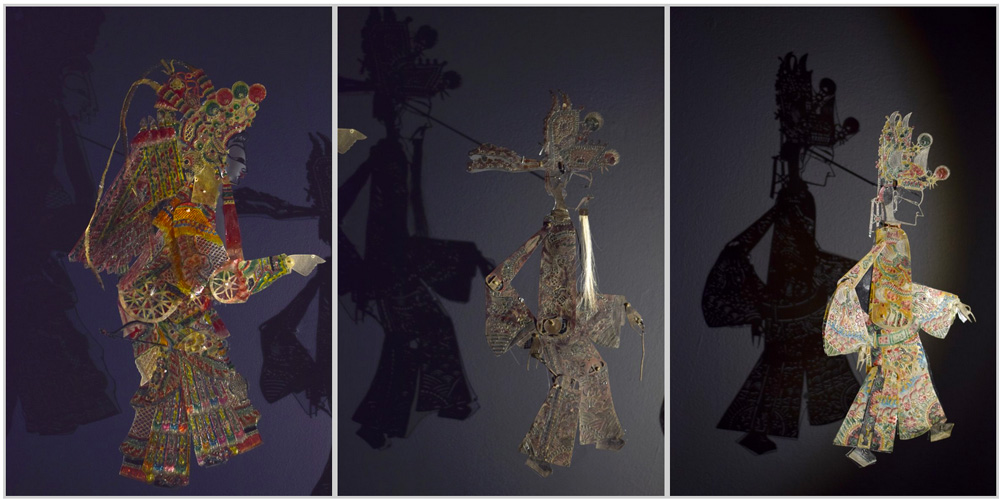
The old and the new—what accumulated life do the puppets carry with them into their new life as artifacts?
Left: Mu Guiying, Woman Warrior, by Hebei province master Lu Fuzeng. Middle: unknown artist, dated early 1900s, from the province of Gansu (Northwestern China). Right: Tang dynasty emperor, dated early 2000s, by Shaanxi province master Wangyan, one of the few women to be working at the master level in China.
can you preserve a shadow?
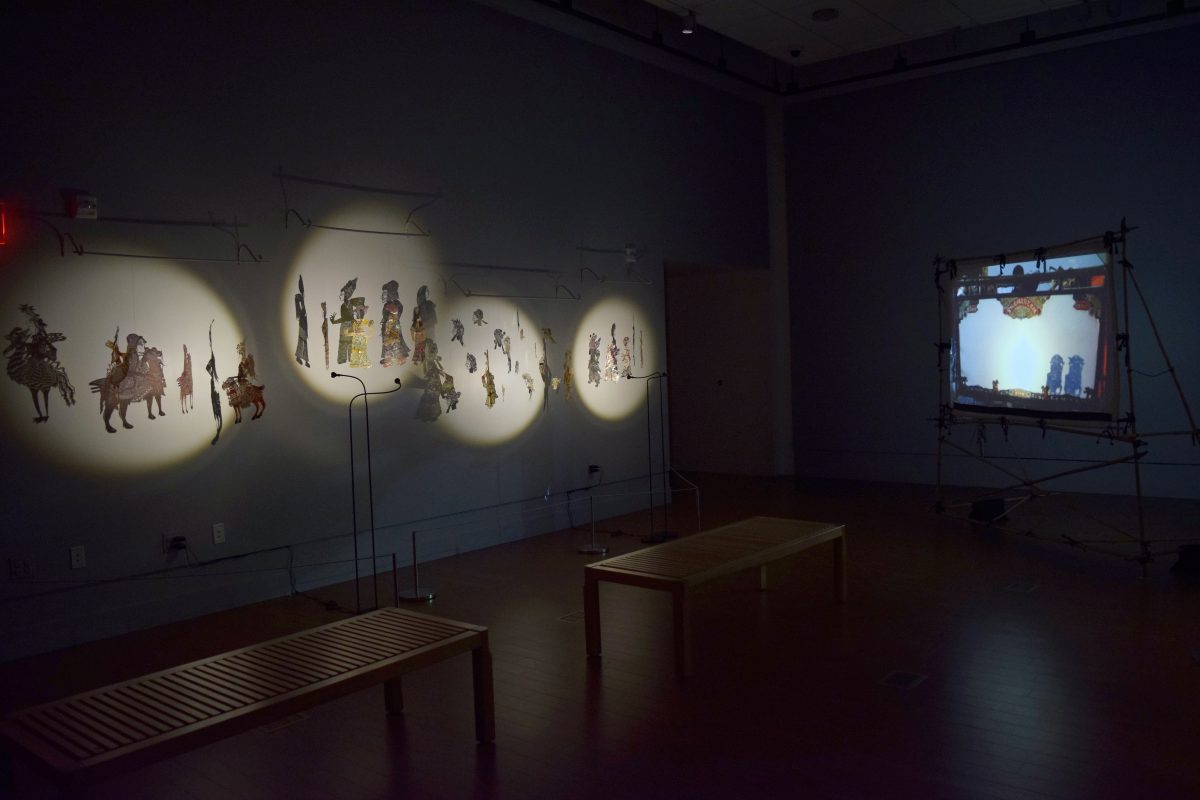
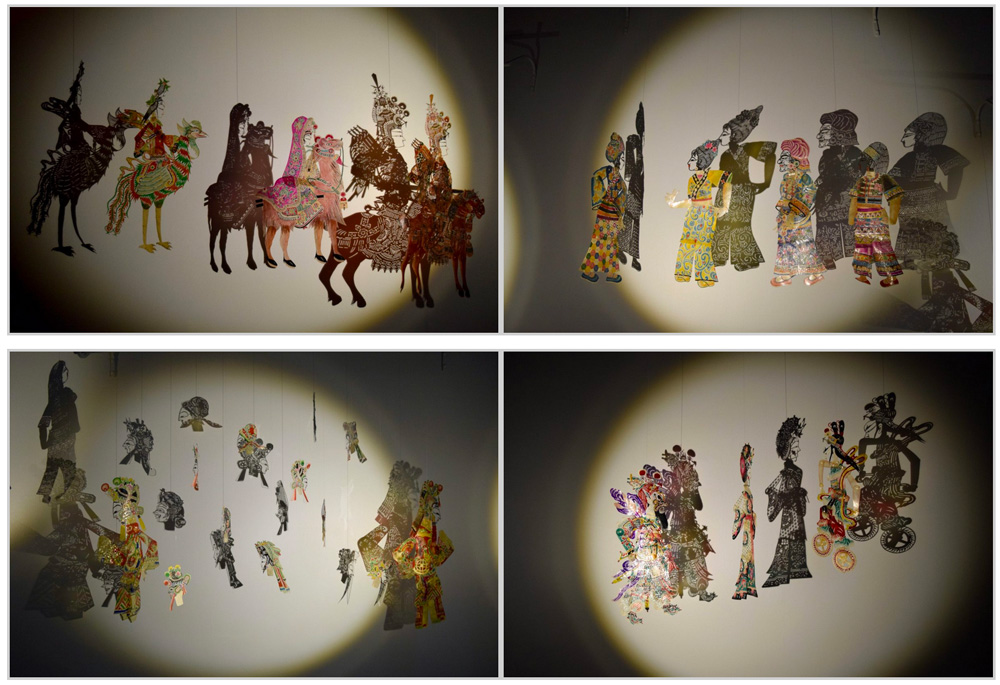
Are the hanging figures more lifelike or more lifeless than their shadows?
Left to Right:
Set 1: Mounted figures by Gao Qingwang, Gansu Province
Set 2: Assorted women shadow puppets by Liu Yongzhou, Yunnan Province
Set 3: Assorted puppets and puppet heads by the Lu Family makers, Hebei Province
Set 4: Assorted puppets by Wei Jinquan, Shaanxi Province
is a ghost all that remains?
In this video you can watch the Lu family of Tangshan, Hebei Province, working together to create their exquisite leather shadow puppet figures, and the Bazhong Shadow Puppet Troupe’s sunlit performance in Sichuan Province. Photo and video by Annie Katsura Rollins, 2011.
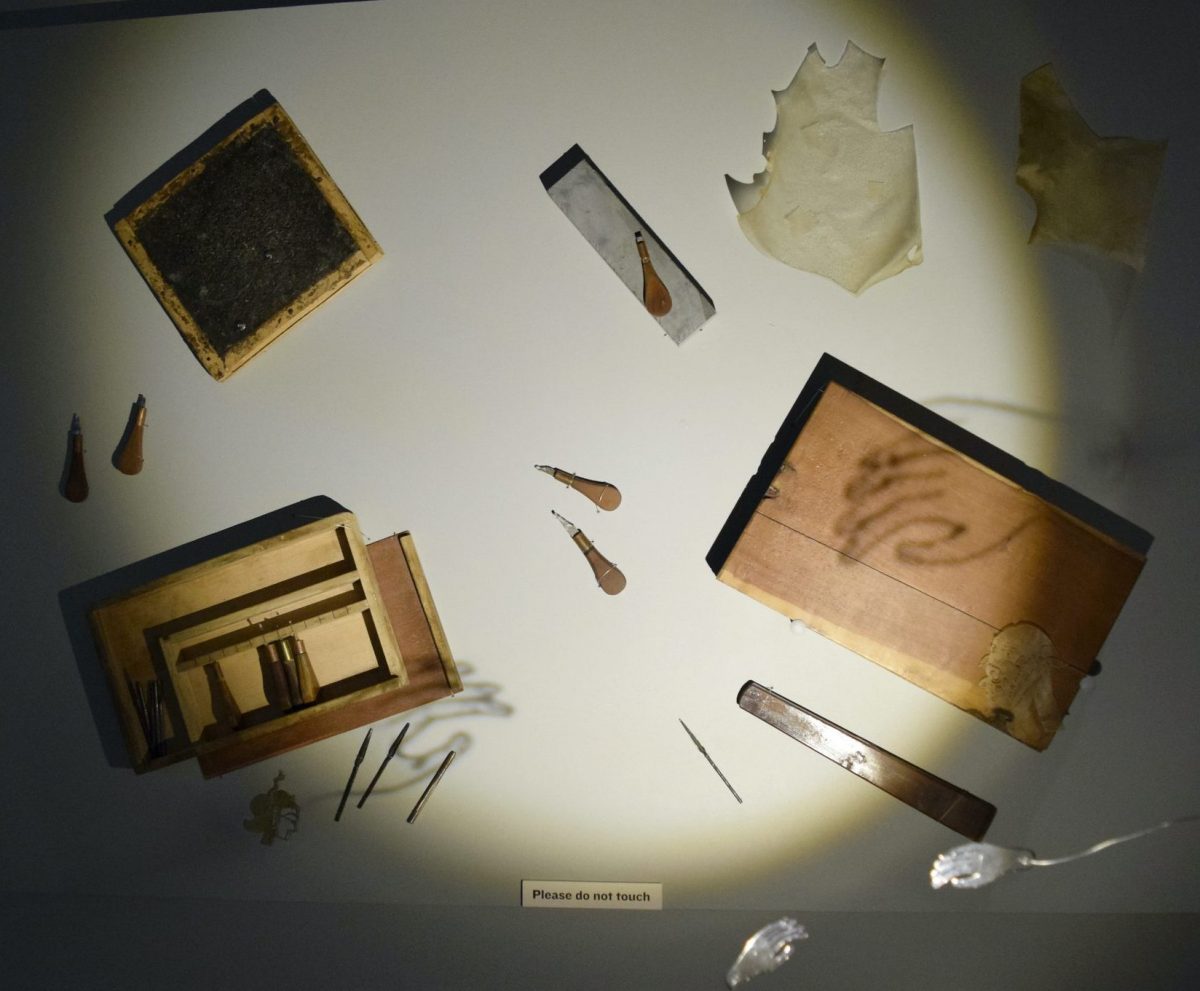
The creation of a puppet is part of its history. These tools are often displayed as the objects that created them, but where are the hands that guided them?
Beeswax boards and small hand blades are typical of cutting tools from northeastern China. Wood cutting boards with small hand blades and metal punches are typical of cutting tools from northern Central China.
how do you hold onto the immaterial?

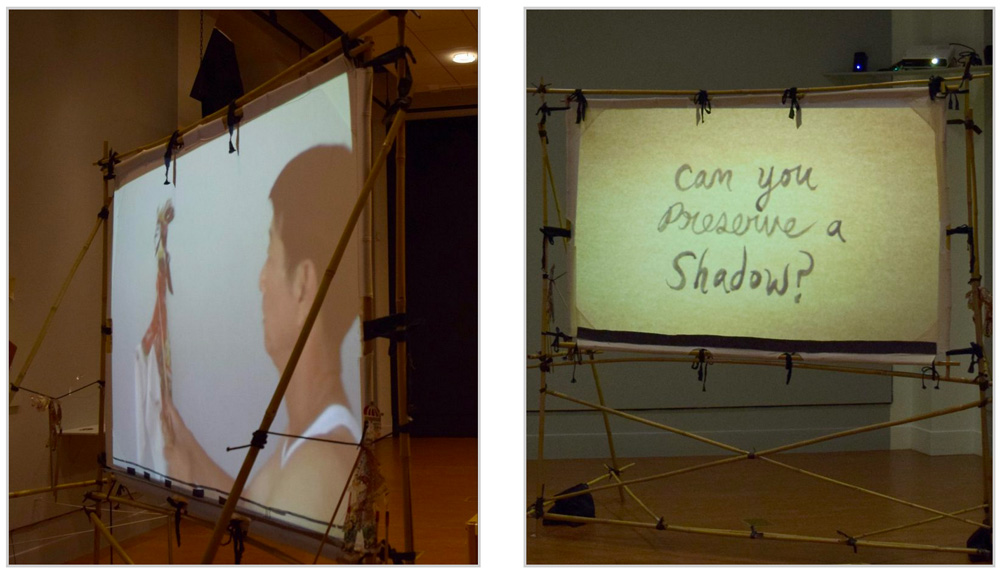
Curator Annie Rollins created an interactive video and shadow puppet stage for the Immaterial Remains exhibit. The video asked whether or not a shadow can truly be preserved and if it is meant to be preserved. It encouraged visitors to use the puppets, allowing them to bring the shadows to life and experience the tradition for themselves.
Video performances (in order):
Changsha Shadow Puppet Troupe of Hunan Province
Master Liu Lixin with the Longzaitian Shadow Puppet Troupe in Beijing
Annie Katsura Rollins is a researcher, theater and puppetry artist, and practitioner of Chinese shadow puppetry, which she has studied as a traditional apprentice since 2008. Rollins has received a Fulbright Fellowship, the Confucius Institute Joint PhD Research Fellowship, and a Canadian SSHRC Doctoral Fellowship for her research. She recently completed her PhD in Montreal at Concordia University’s Interdisciplinary Humanities PhD program on the precarity of safeguarding traditional puppet forms. Recent venues for her exhibitions, lectures, and performances include the Art Institute of Chicago, the Montreal Botanical Gardens, the Center for Puppetry Arts in Atlanta, Bucknell University, Luther College, the Linden Center in Yunnan, China, and the Rietveld Academie in the Netherlands. Annie has published articles in Puppetry International, Asian Theatre Journal, Manip, and Anthropology Now, and created the first comprehensive Chinese shadow puppetry site in English at chineseshadowpuppetry.com.
Photographs by Abby Bosley 2019.
Annie Katsura Rollins is a researcher, theater and puppetry artist, and practitioner of Chinese shadow puppetry, which she has studied as a traditional apprentice since 2008. Rollins has received a Fulbright Fellowship, the Confucius Institute Joint PhD Research Fellowship, and a Canadian SSHRC Doctoral Fellowship for her research. She recently completed her PhD in Montreal at Concordia University’s Interdisciplinary Humanities PhD program on the precarity of safeguarding traditional puppet forms. Recent venues for her exhibitions, lectures, and performances include the Art Institute of Chicago, the Montreal Botanical Gardens, the Center for Puppetry Arts in Atlanta, Bucknell University, Luther College, the Linden Center in Yunnan, China, and the Rietveld Academie in the Netherlands. Annie has published articles in Puppetry International, Asian Theatre Journal, Manip, and Anthropology Now, and created the first comprehensive Chinese shadow puppetry site in English at chineseshadowpuppetry.com.
Photographs by Abby Bosley 2019.
